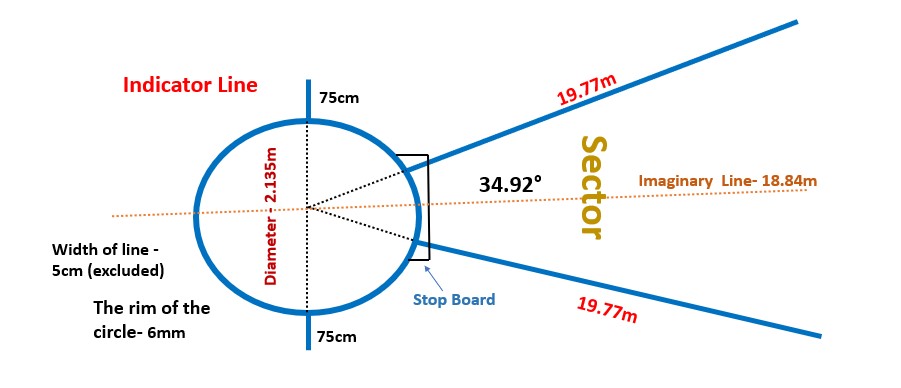Shot Put: History, Rules and Measurements
At its core, shotput involves throwing a heavy ball, called a “shot,” from a circular area with a diameter of 2.135 meters. The athlete must push the shot rather than throw it, a motion that requires a unique blend of strength and skill. The objective is to achieve the greatest possible distance while adhering to strict rules and techniques.
A Brief History of Shot Put
Ancient Origins
The origins of shot put can be traced back to ancient civilizations where feats of strength were celebrated. Historical records indicate that early Greeks and Romans engaged in throwing stones to showcase their physical power. This early version of shot put emphasized sheer strength rather than the refined technique and precision that characterize the sport today.
Modern Development
Shot put began its transformation into a modern athletic event in the 19th century. It was officially included in the Olympic Games in 1896 for men and later for women in 1948. Over time, the sport underwent significant changes with the introduction of better equipment, more sophisticated techniques, and standardized rules. These developments have solidified shot put’s status as a cornerstone of both amateur and professional track and field athletics.
Equipment and Measurements
The Shot:
The shot must be made of solid iron, brass, or a similar metal, with a smooth, spherical surface. For men, the shot weighs 7.260 kilograms and has a circumference of 110-130 millimeters. For women, it weighs 4 kilograms and has a circumference of 95-110 millimeters.
The Circle:
The shot put circle is 2.135 meters in diameter and features a stop board that is 1.21-1.23 meters long, 11 centimeters high, and 30 centimeters wide. The athlete must stay within the circle during the throw and exit from the back after the shot lands.

Styles of Throws
Shot putters can choose from three primary styles:
- Orthodox Style (Simple Method): This traditional method emphasizes a straightforward, powerful push of the shot.
- Parry O’Brien Style (Glide Method): Named after the famous Olympian, this technique involves a glide across the circle to build momentum before the release.
- Disco Put Style (Rotatory Method): Also known as the rotational technique, this style uses a spinning motion to maximize the shot’s speed and distance.
Rules and Regulations of Shot Put
To ensure fairness and safety, shot put follows a strict set of rules:
- Throwing Technique: The shot must be put from the shoulder using one hand, held close to the neck, and released above shoulder height. It must land within a 34.92° sector.
- Fouls: Touching the top or outside of the circle or the stop board during the throw results in a foul. Exiting the circle before the shot lands also constitutes a foul.
- Attempts: Athletes typically have three attempts if there are more than eight competitors, and six attempts if there are eight or fewer. The top eight athletes receive three additional attempts.
- Measurement: The distance is measured from the inside edge of the stop board to the nearest mark made by the shot. A throw is only measured if it lands within the legal sector.
Safety Measures
Given the weight and force involved in shot put, safety is paramount:
- Hand and Finger Protection: Athletes may tape their fingers for support but cannot tape multiple fingers together. Gloves are not allowed.
- Substance Use: Applying substances to enhance grip is permitted, but spraying substances in the circle or on shoes is not.
Officials and Timing
A team of officials oversees shot put events, including a chief judge, measurement judges, a scorer, a time judge, and an announcer. Athletes have one minute to complete their throw after being called.
Conclusion
Mastering shot put requires dedication, technique, and an understanding of its detailed rules and equipment. By appreciating these elements, athletes can enhance their performance and contribute to the rich tradition of this historic sport. Whether competing at a local meet or on the world stage, the principles of shot put remain a testament to the blend of strength, skill, and precision that define track and field athletics.

